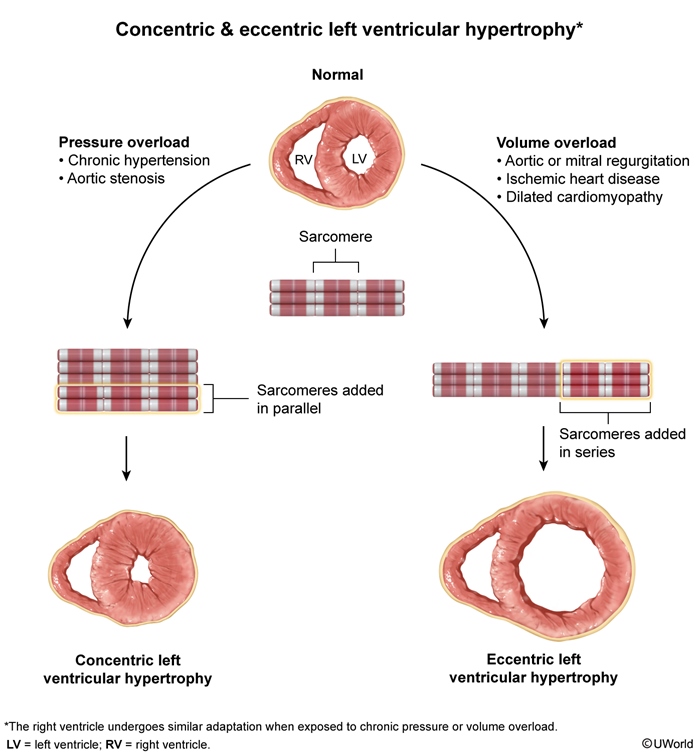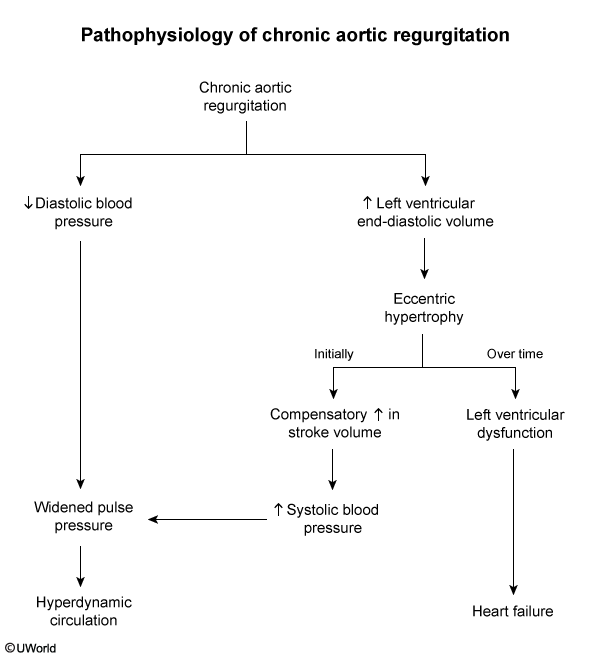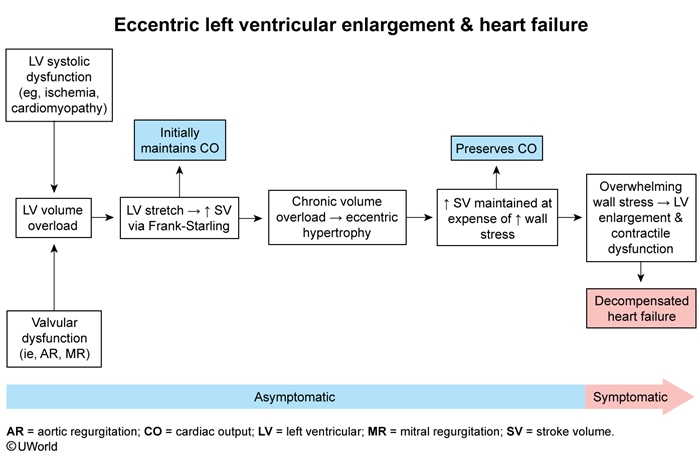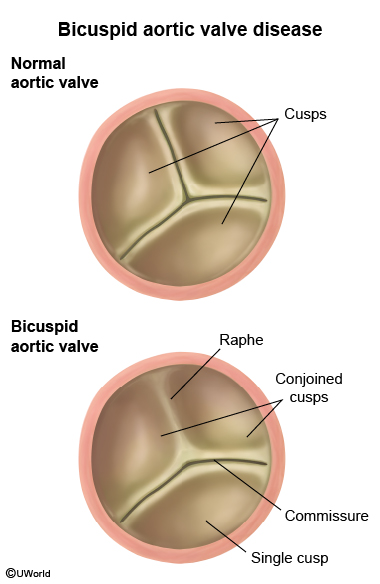Valve Disorders: Aortic Regurgitation
Article Sections
Introduction
Aortic regurgitation (AR) occurs due to impaired closure of the aortic valve, which leads to leakage of blood from the aorta back into the left ventricle during diastole. It can result from disruption of the aortic valve leaflets themselves or from aortic root dilation that prevents adequate closure of normal valve leaflets. Severe AR causes substantial hemodynamic disruption that leads to heart failure.
Pathophysiology
AR most commonly results from a degenerative process that causes gradual deterioration of valvular function (chronic AR). Less commonly, an acute disturbance causes abrupt impairment of aortic valve closure (acute AR). In all types of AR, a portion of left ventricular output leaks back into the left ventricle during diastole, causing decreased aortic diastolic pressure. The backflow of blood also increases left ventricular end-diastolic volume as the left ventricle undergoes diastolic filling both normally from the left atrium and retrograde from the aorta. The hemodynamic consequences of these changes largely depend on the acuity of the valve regurgitation.
Continue Learning with UWorld
Get the full Valve Disorders: Aortic Regurgitation article plus rich visuals, real-world cases, and in-depth insights from medical experts, all available through the UWorld Medical Library.
Figures



